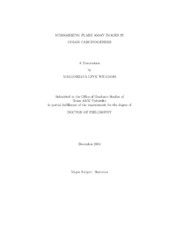| dc.description.abstract | Intestinal tract cancer is one of the more common cancers in the United States. While in some individuals a genetic component causes the cancer, the rate of cancer in the remainder of the population is believed to be affected by diet. Since cancer usually develops slowly, the amount of oxidative damage to DNA can be used as a cancer biomarker. This dissertation examines effective ways of analyzing FLARE assay data, which quantifies oxidative damage. The statistical methods will be implemented on data from a FLARE assay experiment, which examines cells from the duodenum and the colon to see if there is a difference in the risk of cancer due to corn or fish oil diets. Treatments of the oxidizing agent dextran sodium sulfate (DSS), DSS with a recovery period, as well as a control will also be used.
Previous methods presented in the literature examined the FLARE data by summarizing the DNA damage of each cell with a single number, such as the relative tail moment (RTM). Variable skewness is proposed as an alternative measure, and shown to be as effective as the RTM in detecting diet and treatment differences in the standard analysis. The RTM and skewness data is then analyzed using a hierarchical model, with both the skewness and RTM showing diet/treatment differences. Simulated data for this model is also considered, and shows that a Bayes Factor (BF) for higher dimensional models does not follow guidelines presented by Kass and Raftery (1995).
It is hypothesized that more information is obtained by describing the DNA damage functions, instead of summarizing them with a single number. From each function, seven points are picked. First, they are modeled independently, and only diet effects are found. However, when the correlation between points at the cell and rat level is modeled, much stronger diet and treatment differences are shown both in the colon and the duodenum than for any of the previous methods. These results are also easier to interpret and represent graphically, showing that the latter is an effective method of analyzing the FLARE data. | en |


